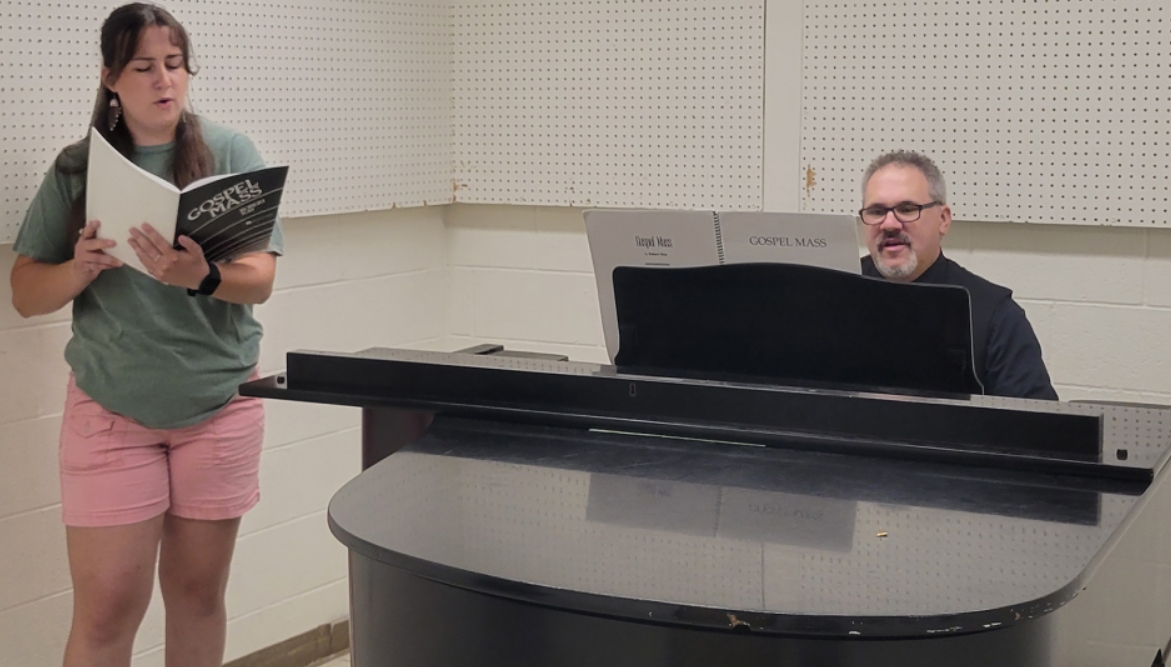WEST LIBERTY, WV- It’s September: a magical time here in the Mountain State where the breeze blows a little cooler, leaves pattern the roads in a blanket of red and orange, and all things seem to begin to wind down for the year. While the autumn season can mark a time for degradation and decay, nature still finds a way to provide.
In this month’s edition of “Ask A Farmer,” I had the opportunity to sit down with Assistant Professor of Biology (and avid forager) Dr. Zachary Graham to discuss the ever-interesting field of foraging. We at West Liberty University are blessed to be surrounded by such a plentiful landscape, so I asked Dr. Graham to put himself back in the shoes of a college student and provide us with a rundown of how students could participate in such an activity.
Q: So, what can we even find and forage in this area?
“West Virginia is a great place to forage because of its diverse habitats. This time of year, we usually get more rain as well, which brings out a lot of edible and choice edible plants. The main ones around now are pawpaws, which are the largest naturally occurring fruit in North America. They can be found in the Northeast all the way down through Appalachia, and are really good for foraging because they grow abundantly in spots around campus. They are around the size of a fist, and are similar in appearance to a very green mango. They share a similar taste profile as well, somewhere between a banana and a mango. Chicken of the Woods is also an abundantly producing plant. It’s orangish-yellow and shares the same stringy texture as chicken, hence the name. You can cook it essentially the same way as poultry, since they share very similar textures.”

Q: Let’s say a West Liberty University student wanted to try to forage for these seasonal items. Where would you recommend searching in order to provide a safe a bountiful forage?
“The campus woods provide for great foraging, especially the new campus trail system. Almost every edible mushroom species in West Virginia can be found on or around those trails. No foraging is easy: you do have to put some effort into it. That’s what makes foraging so fun and rewarding is putting in the work. You can find a lot of Chicken of the Woods in the surrounding wooded areas around Oglebay as well. Pretty much any undisturbed woodland area is great for foraging. Pawpaws love to grow closer to water, so they can also be found in places around Downtown Wheeling”.
Q: Most importantly, how can we practice sustainable foraging?
“The main thing is to really be mindful of what you are taking. You don’t want to harm the native population. There are some great rules of thumb when it comes to good foraging practice. First one being, never take more than one-tenth of what is in the area. If you see a big patch of pawpaws with about fifty fruits, you should only take five. If you take them all, it can result in a smaller population the next season. The same thing applies to mushrooms: never take them all. Mushrooms can vary, as there is not a lot of solid evidence showing that if you over-harvest any of the common species around here that it will affect the spawn rate. However, some mushrooms, like morels, can be wiped out from an area if you harvest too many. Just be mindful and understand that wildlife also depend on the same items you are taking.”
Q: Is there anything else you would like to add?
“A lot of people are intimidated by foraging because they have been dissociated from where food comes from, and it can be strange for someone to go out into the woods and harvest plants. Foraging is one of the things that makes a human a human. It’s not scary, and there are a lot of easily identifiable plants. You should always talk to a seasoned forager before going out and trying yourself, although there are very few plants native to the area that are considered dangerous. Just be respectful, and don’t be afraid, because you never know what you are going to find.”







